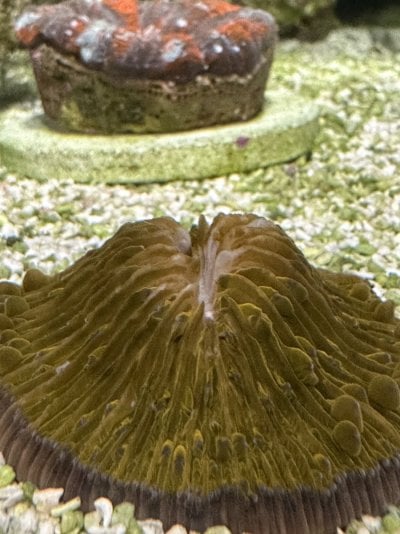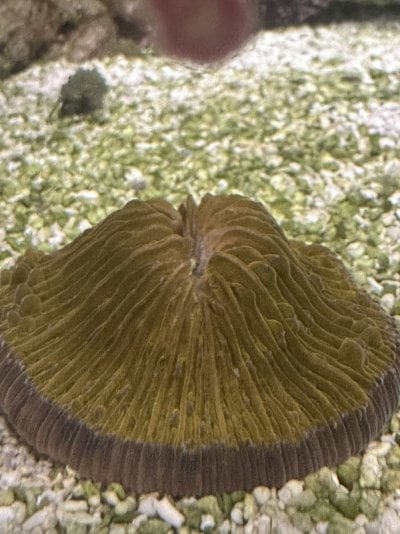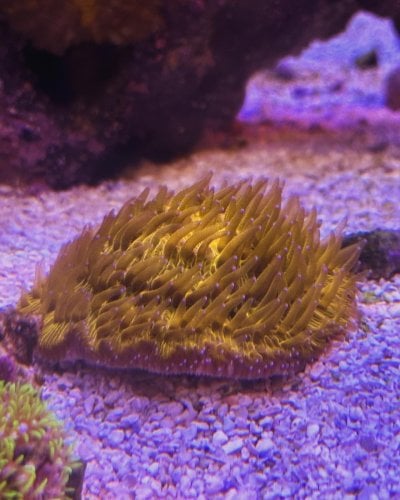- Joined
- Jan 21, 2014
- Messages
- 2,121
- Reaction score
- 650
Iv had this plate coral for over 4 months was doing amazinf. Till one day came home to find it all shrinked up, and the very next day it started to lose colors, and the mouth started to get wider, and more dead looking. So of course i tested my parameters. And it wasn’t my parameters. And more like the plate being a plate, where i learned that they die randomly.
So i decided since its going to die anyway. Why not try, and kfc dip it (antibiotics). Immediately few days after. I noticed that the plate is regaining color back, and the mouth fixing itself. I was shocked myself with this recovery. As i never thought it will even come back, let alone gain the mouth back. A month later, the tentacles came back but they are not fluffy as they used to be. And thats where my question comes.
Why when the plate regained health, its not as fluffy as used to be, and the tentacle shape/style is different? I attached couple of pictures, shows the damage on the mouth in the first one, and the second one when it started to heal, and mouth getting smaller.
Thats how it looks now is not the same as the picture i attached below long flowy tips. Weird how the shape completely changed after recovery. What do you guys think?



So i decided since its going to die anyway. Why not try, and kfc dip it (antibiotics). Immediately few days after. I noticed that the plate is regaining color back, and the mouth fixing itself. I was shocked myself with this recovery. As i never thought it will even come back, let alone gain the mouth back. A month later, the tentacles came back but they are not fluffy as they used to be. And thats where my question comes.
Why when the plate regained health, its not as fluffy as used to be, and the tentacle shape/style is different? I attached couple of pictures, shows the damage on the mouth in the first one, and the second one when it started to heal, and mouth getting smaller.
Thats how it looks now is not the same as the picture i attached below long flowy tips. Weird how the shape completely changed after recovery. What do you guys think?
























